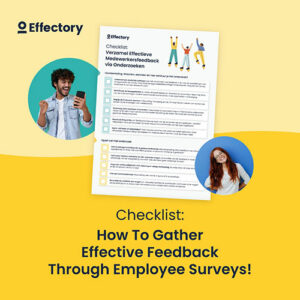How does your organisation deal with the tension between compliance and the need for employee autonomy? Within this blog I will discuss four proven methods that help organisations maintain the balance between compliance and autonomy, and how organisations can ensure compliance does not decrease employee engagement.
How to maintain a healthy balance between compliance and engagement

Autonomy vs. Compliance
A feeling of autonomy is important for the motivation and engagement of employees. We know form our employee surveys that the right combination between freedom and responsibility is key to employee motivation and engagement. Organisations want to allow employees freedom, but also want to eliminate as many risks as they can, and must therefore ensure employees adhere to certain rules.
This inevitably creates tension within organisations between the need for compliance on the one hand, the need for employee autonomy on the other.
The risk
As regulations and rules have increased over the last few years, and the transparency within organisations has also increased (partly due to social media), the consequences of getting compliance wrong are greater than ever. When organisations get compliance wrong the results can vary from: a hefty fine, bad publicity, disengaged employees and it can even result in the downfall of an organisation.
Organisations must therefore comply, and make sure that making large scale mistakes is impossible. Yet organisations know that their employees do not like to feel patronised and that independence for employees increases motivation and engagement.
How to gather feedback from your employees
The definitive checklist for creating your employee engagement survey.
DownloadSo how can organisations help ensure compliance whilst maintaining employee engagement? Below I outline four ways in which organisations can do so.
1. Map out the risks
Whatever you do, it is important to properly map the risks inherent in your business so that your employees are aware of the best way that they can handle them. There must be absolutely no doubt in your employees mind what they must not do.
Even with the best of intentions an employee can think they are doing what is best for the company whereas they are actually harming the organisation. For example, a salesperson gives a free product because they want to close the deal for their company, or someone might hand their password to a customer in order to speed things up for them.
2. Talk about the risks
Education, the use of examples, exercises and role play are all important tools in talking about the risks. Furthermore, it can also be useful to get employees to make an inventory of all possible hazards. By doing so it makes your employees more aware of the job they are doing and what’s more, they are likely to come up with excellent measures to predict or eliminate the greatest dangers.
3. Fight against patronising your employees
Make sure that as directors, you fight over-enthusiastic regulation; especially in areas where public authorities or supervisory bodies set down over-strict or even patronising demands. Let your employees see that you are fighting and explain that for the time being these rules will have to be obeyed. When employees see that strict rules have not just been set down for their own organisation, they will be less likely to lose their engagement and commitment to the organisation.
4. Make sure that employees are able to address pointless rules
Make it possible for employees to report pointless rules and take their reports seriously. For example, this can be done by setting boundaries such as the board giving a proper response within 24 hours by either removing the pointless rule or explaining why it has to be there in the first place. The drawback with rules, guidelines, procedures and protocols is that that are easily added but not easily removed.
5 ways HR can modernise organisations
Our work with multinational organisations has shown us that when these four methods are incorporated into organisations then employee engagement is largely retained, whilst the risks that organisations face are kept to a minimum.
